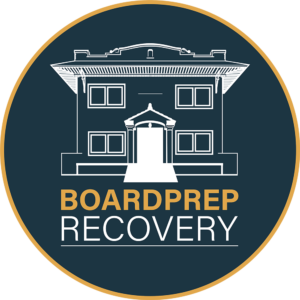According to research conducted by Lisa Merlo, PhD, a researcher at the University of Florida’s Center for Addiction Research and Education and published in the Journal of Addiction Medicine, while doctors abuse alcohol or drugs at about the same rate as the general public, they’re five times as likely to abuse prescription drugs.[1] There are a number of factors relating specifically to physicians’ lives contributing to both this statistic and how even doctors aren’t immune to the epidemic of prescription drug addiction found in virtually every U.S. city today.
Part of Merlo’s study involved interviewing physicians who were being monitored by their state physician health programs for a variety of substance use disorders (i.e., chemical dependency associated with alcohol and/or drugs). Nearly 70% of the doctors interviewed had an addiction to prescription drugs. Unlike what is commonly reported by those in the general population who’re addicted to prescription drugs—that their use of such drugs is ‘recreational’ (to ‘get high’)—most of the doctors stated they’d turned to prescription drugs “to relieve stress and physical or emotional pain.”[2]
Another contributing factor is physicians’ easy access to mood-altering drugs; specifically, their ability to prescribe medications, their wide-ranging professional healthcare networks and their ‘open door’ access to hospitals’ and medical clinics’ pharmaceutical resources. “That access can not only foment a problem, it can perpetuate it,” says Marvin D. Seppala, MD, chief medical officer at Hazelden[3], which operates a number of addiction treatment centers across the United States.
And since “finding ways and means to get more” (of the drug) is the top M.O. of every person with a chemical dependency[4], Seppala says self-medicating physicians will do everything in their power to ensure their supply continues. “They’re often described as the best workers in the hospital. They’ll overwork to compensate for other ways in which they may be falling short, and to protect their supply. They’ll sign up for extra call and show up for rounds they don’t have to do. Physicians are intelligent and skilled at hiding their addictions. Few, no matter how desperate, seek help of their own accord.”[5]
Fortunately, doctors who’re stuck in the vicious cycle of addiction can find help through confidential treatment and potentially not lose their medical licensure or practice. According to Seppala, in addition to the Health Insurance Portability and Accountability Act (HIPAA), physicians who undergo treatment for a substance use disorder are protected under Title 42 in the Code of Federal Regulations (42 CFR) — which, he says, affords even greater privacy protection.[6] In other words, doctors with a chemical dependency can seek professional treatment without disclosing their problem to colleagues or a medical board.
Whether attending an outpatient or inpatient treatment programs, the protocol for recovery from a substance use disorder typically includes group and individual psychotherapy, education on the nature of addiction and recovery, and both family and return-to-work evaluations.
After completing treatment, patients continue their recovery by participating in 12-step programs and continuing to develop and utilize their network of people dedicated to and mutually supportive of recovery on a daily basis.
Even with the guarantee of receiving confidential addiction treatment, Seppala strongly suggests that upon successful completion of treatment, doctors report themselves to their state’s physician health program for monitoring and support.[7] Normally, physician health programs provide ongoing monitoring and assistance (typically lasting five years, depending on the state and the individual), which may include behavioral assessments, random urine testing, workplace surveillance and counseling support.
For those who see recovery as an opportunity to maintain their medical license and practice, while building a new life free from active addiction, such monitoring and support can prove to be invaluable. “Chemically dependent physicians who don’t participate in monitoring programs have a relapse rate similar to that of the general population; nearly one half of adults who undergo substance abuse treatment relapse during the first year. Physicians who undergo treatment and participate in ongoing monitoring, however, have a far lower rate of relapse, with only 22% testing positive at any point during the 5-year monitoring period and 71% still licensed and employed after 5 years.”[8]
[1] Merlo LJ, Singhakant S, Cummings SM, Cottler LB. Reasons for misuse of prescription medication among physicians undergoing monitoring by a physician health program. J Addict Med. 2013;7:349-353.
[2] Ibid.
[3] https://gme.med.ufl.edu/files/2014/02/Drug-Abuse-Among-Doctors.pdf
[4] https://na.org/admin/include/spaw2/uploads/pdf/litfiles/us_english/misc/Who%20Is%20an%20Addict.pdf
[5] https://gme.med.ufl.edu/files/2014/02/Drug-Abuse-Among-Doctors.pdf
[6] Ibid.
[7] Ibid.
[8] DuPont RL, McLellan AT, Carr G, Gendel M, Skipper GE. How are addicted physicians treated? A national survey of Physician Health Programs. J Subst Abuse Treat. 2009; 37:1-7.







